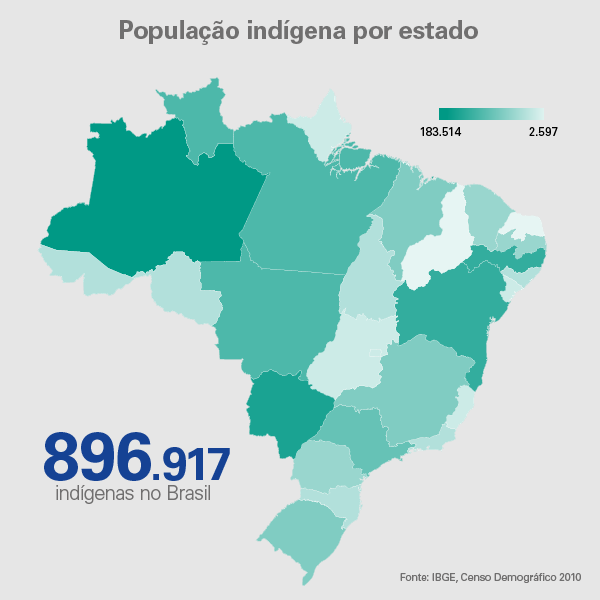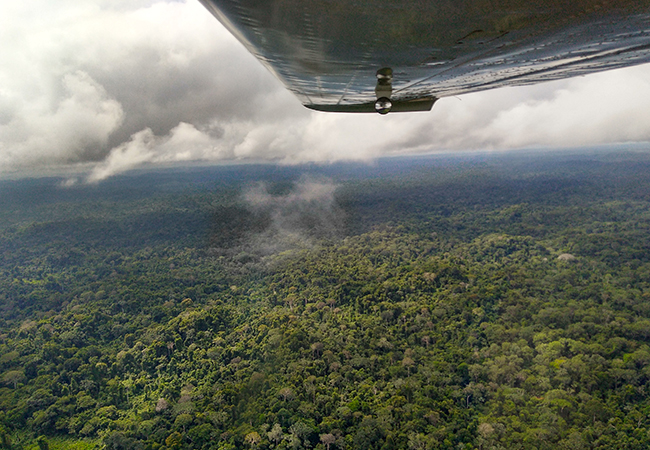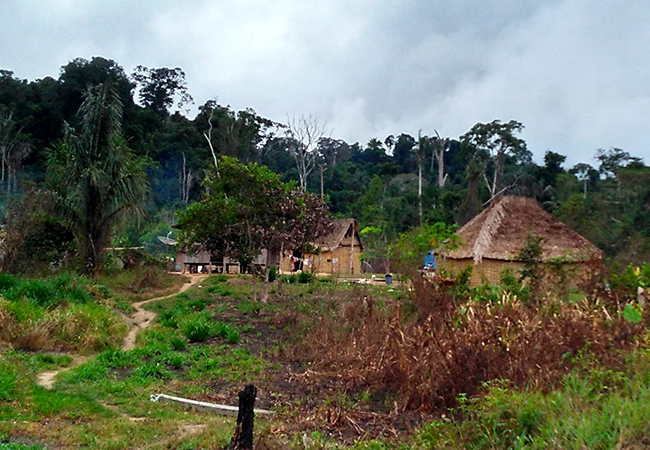Census of Agriculture goes to distant communities, spotlights Indian peoples
February 26, 2018 09h00 AM | Last Updated: June 05, 2018 03h48 PM
The Census of Agriculture 2017 goes beyond traditional farms and latifundia In addition to usual agricultural producers, the survey also visits Indian peoples, who live virtually isolated from the rest of the society. Like in the Yanomami land, located in Roraima and Amazonas, the output of these people is often in smaller scale and economically insignificant, yet with a great social importance. Even the language is an obstacle for the enumerators.
The Yanomami Indian Land was registered in 1992, yet not all the nearly 200 communities are accustomed to the direct contact with the outside world. As a result, few of them speak Portuguese, aside from other cultural issues that hinder the data collection for the Census, like the difficulty to understand time, quantity and area measurements.

Cassava cropping is usual among Indians
"They have difficulty to understand our logic of agricultural production. The area issue is a problem for us, who need to acquire land. It is not an issue for them, because they have all the space to plant", explains Eduardo Frigerio, IBGE´s subarea coordinator in the municipality of Alto Alegre (RR).
"Time issue is also complicated. We have to make adaptations, asking, for instance, whether that product is always planted, only in the winter or only in the summer. We try to link it with rainfall, with drought. They don´t have the notion of year, only of weeks, days and months", continues Frigerio. "But we are well received, even with the language barrier. There is always someone speaking Portuguese to help".

Difficult access
When visiting the communities, goodwill is not enough to understand the differences. Many of them are located in areas difficult to access, requiring charter planes or boats, as well as providing a very limited structure of communication and lodging, requiring travels that can take days or even weeks. In addition, the regional background involves a conflict between Indians and non-Indians, which requires an extra care from the IBGE agents.
"We need interpreter-guides, we need the help of Funai - National Indian Foundation, we need a political negotiation to explain their leaders what we are doing, for what the Census of Agriculture serves, etc.", explains Marta Antunes, responsible for the IBGE´s Workgroup for Traditional Peoples and Communities. "We visit the communities recently contacted, but not the isolated ones, because we don´t contact those people who decide to live in isolation. The IBGE respects their rights", stresses her.
This workgroup was gathered precisely to include people like the Yanomami, who have cultural characteristics different from most of the Brazilian population. "This group exists to qualify the IBGE for treating these populations in the official statistics. It emerges to follow up the Indian subject, which advanced a lot in the 2010 Population Census, in order to advance in the other traditional communities", explains Marta. The Decree no. 8,750 of 2016 establishes 28 traditional peoples, including Indians, quilombolas and gypsies, among others.

Boats are means of access to isolated areas in Yanomami Lands
Besides Funai, Sesai - Special Department of Indian Health also plays an important role in the missions of the Census of Agriculture in the communities. A department of the Ministry of Health, it supports the operation with logistics and even with the contact with the communities. "Sesai communicates by radio with the health centers in the communities. When we set up a mission, we ask Sesai to communicate the health centers by radio and then they warn the Indian leaders about our trip", tells Frigerio. "As they constantly contact the Indian villages, they provide us credibility as well", explains him.
Years ago, the data were entirely collected in Indian villages by radio, not requiring any travel to those areas. "We even arrived in many of these communities, yet not as prepared as we are today", highlights him.

Census of Agriculture teams arrive at distant communities in charter flights
Social visibility
In spite of being a tool for economic planning, the Census of Agriculture has a clear social role, especially in the development of public policies for different sectors of the population, as well as recognizing these different groups. This is even more evident in the case of Indians, as well as of quilombolas.
"We have to take into account the communities like we used to do with any Brazilian that produces, regardless of being an Indian with a small output. We have to portray every Brazilian. If it were only for the production and the economic aspect, other surveys like PAM - Municipal Agricultural Production and PPM - Municipal Livestock Survey could be used, as we already do", explains Antônio Florido, technical manager of the Census of Agriculture. "We cannot avoid it because its is expensive or distant".
According to Florido, it is relevant to profile the Indian life in Brazil, even with a low impact on the national agricultural production. For this reason, the planning of the Census of Agriculture anticipates a publication fully dedicated to these populations.
"They produce more for their own consumption: cassava, cattle, etc. They live on fishing and forestry. It is not economically important, but its social aspect is important. Actually, not only the Indian territories, but also the quilombolas and other traditional communities", concludes Florido.

The less contacted communities produce food for their own subsistence




















